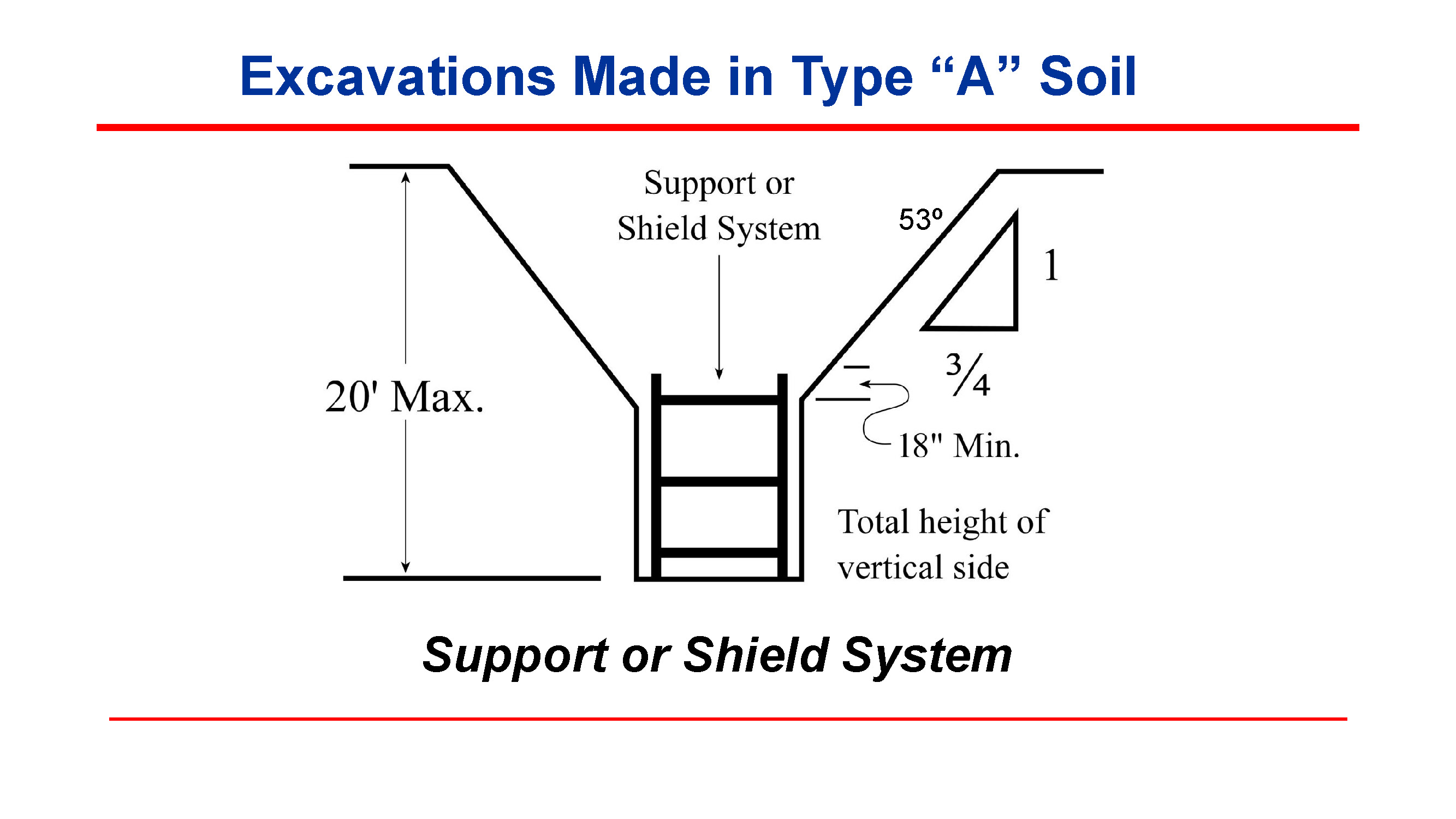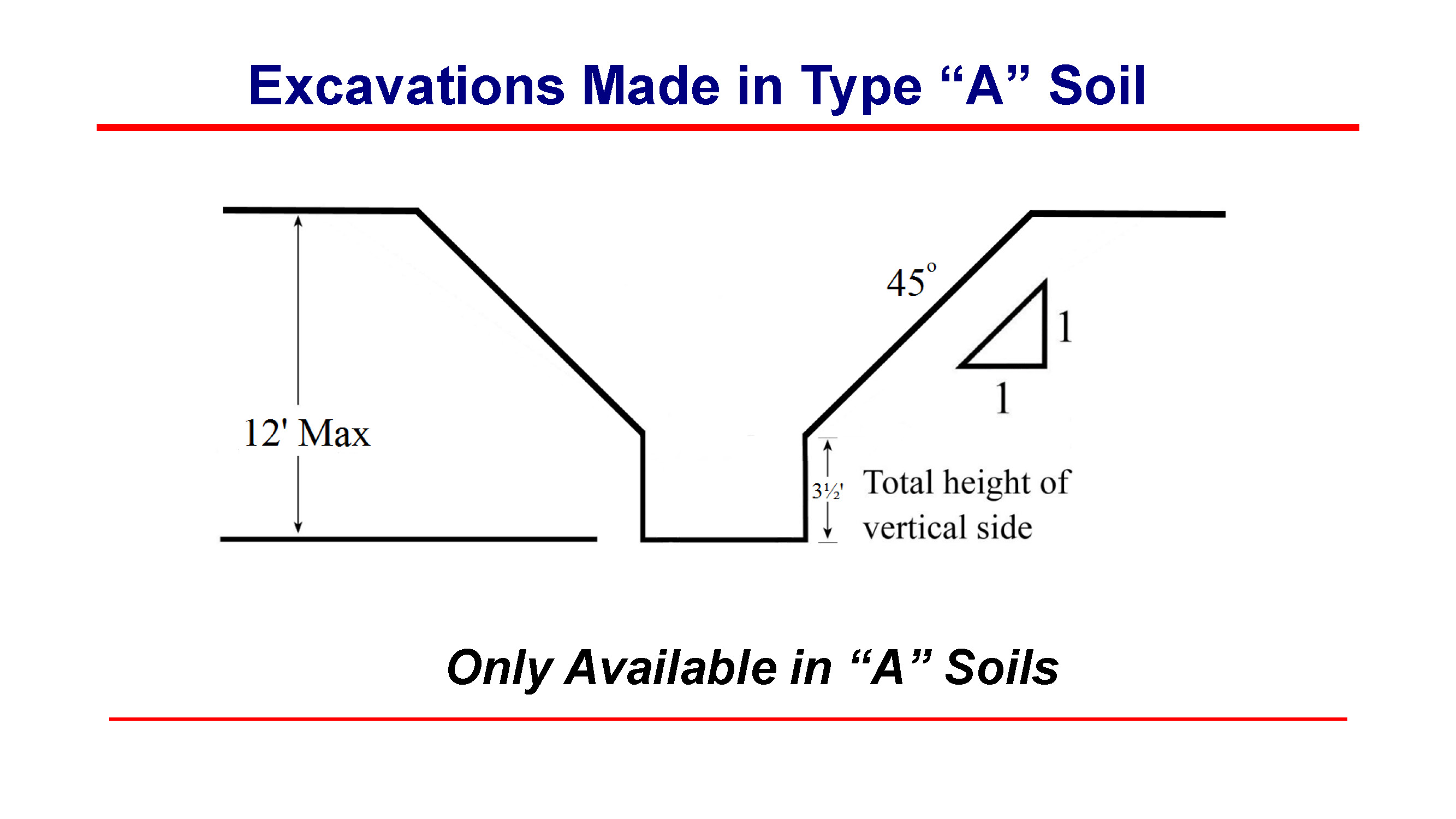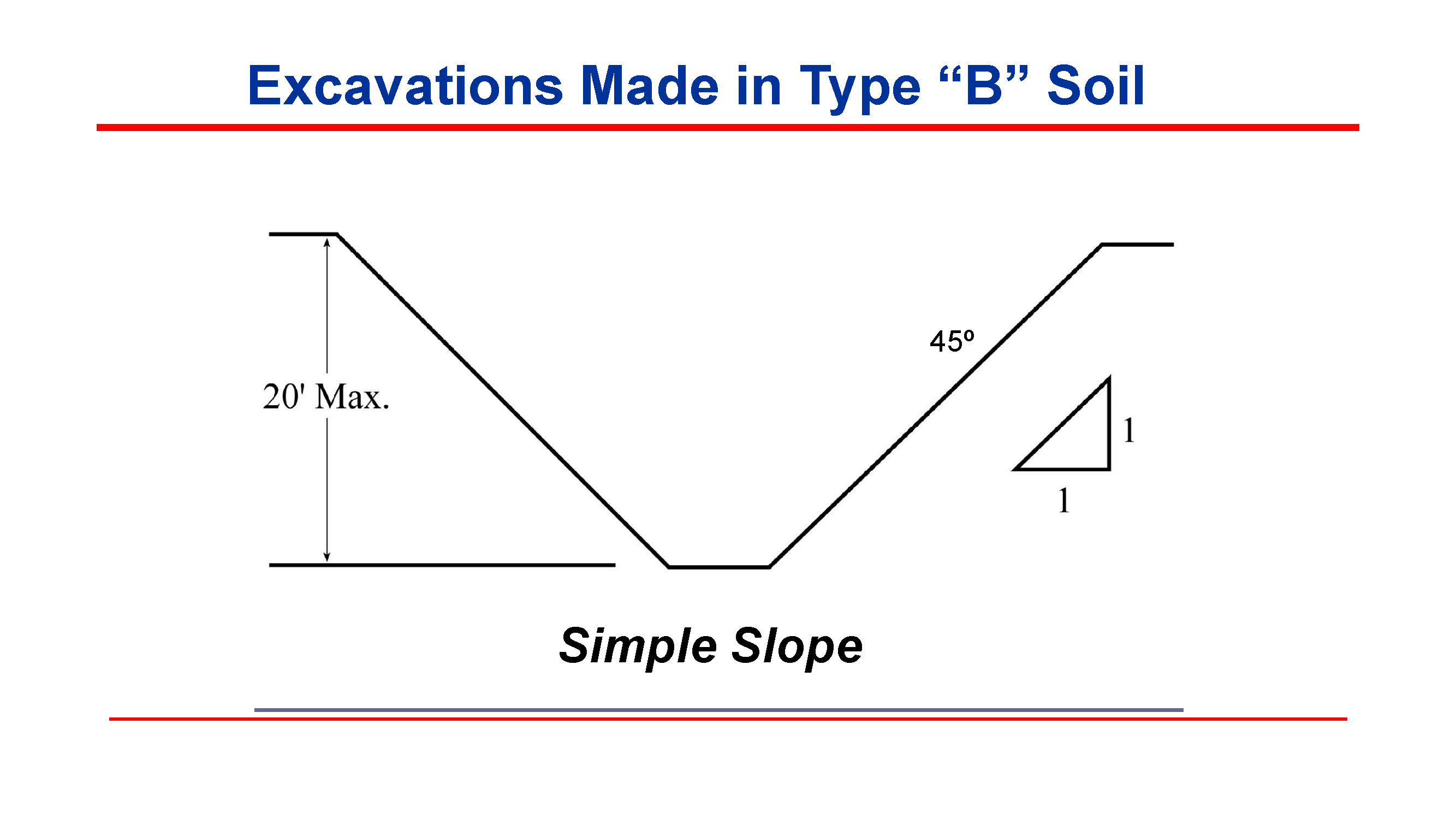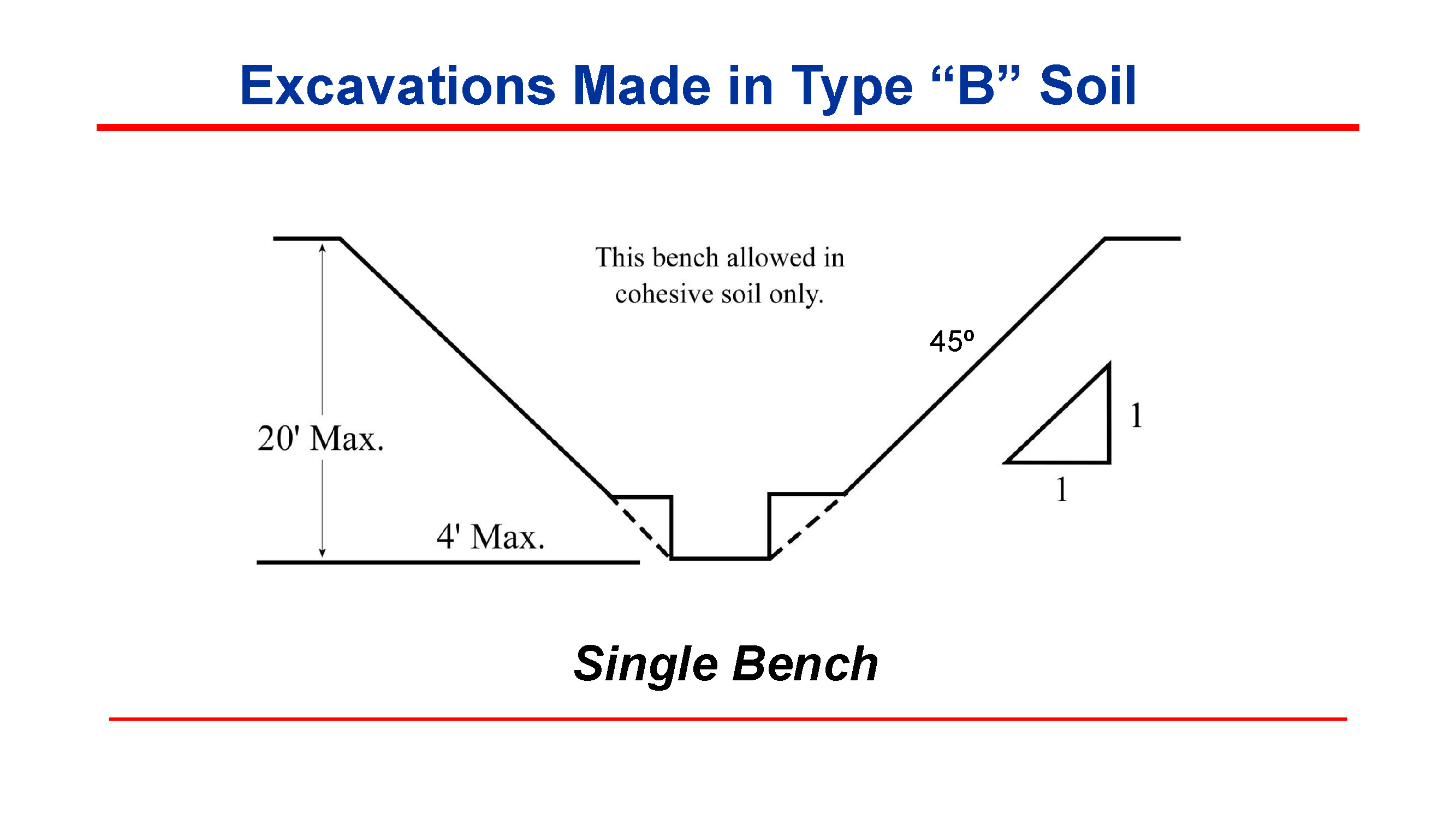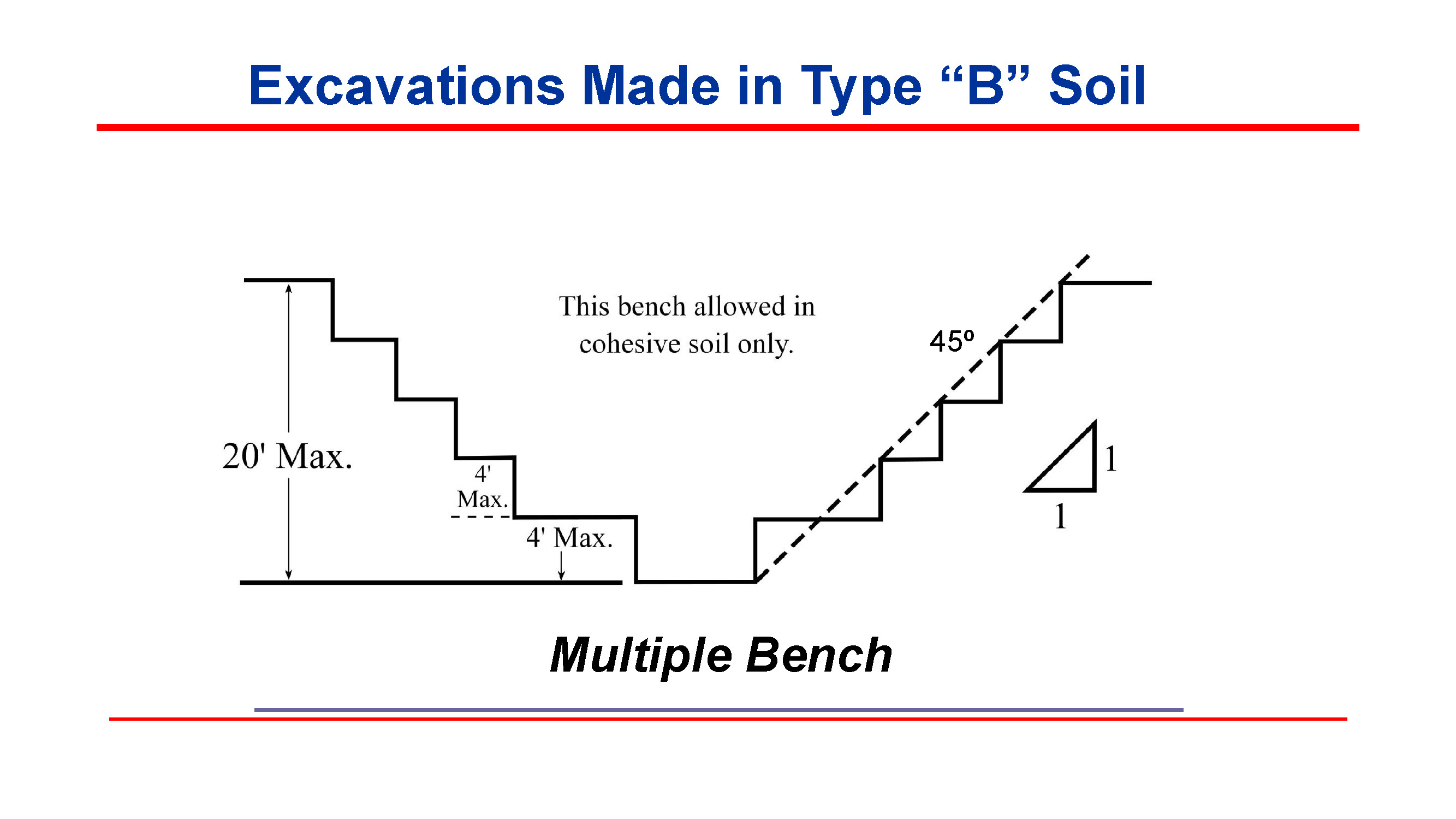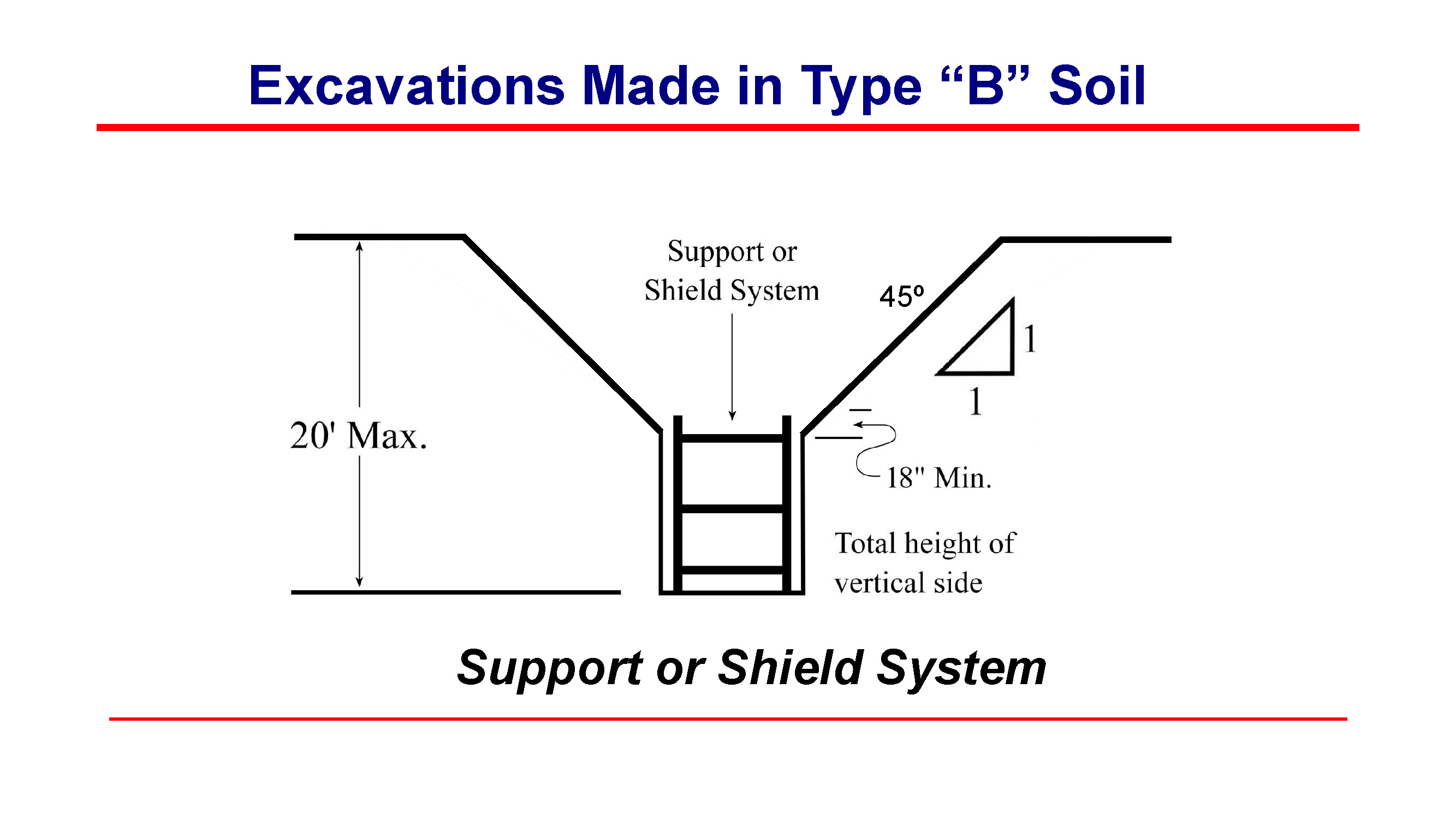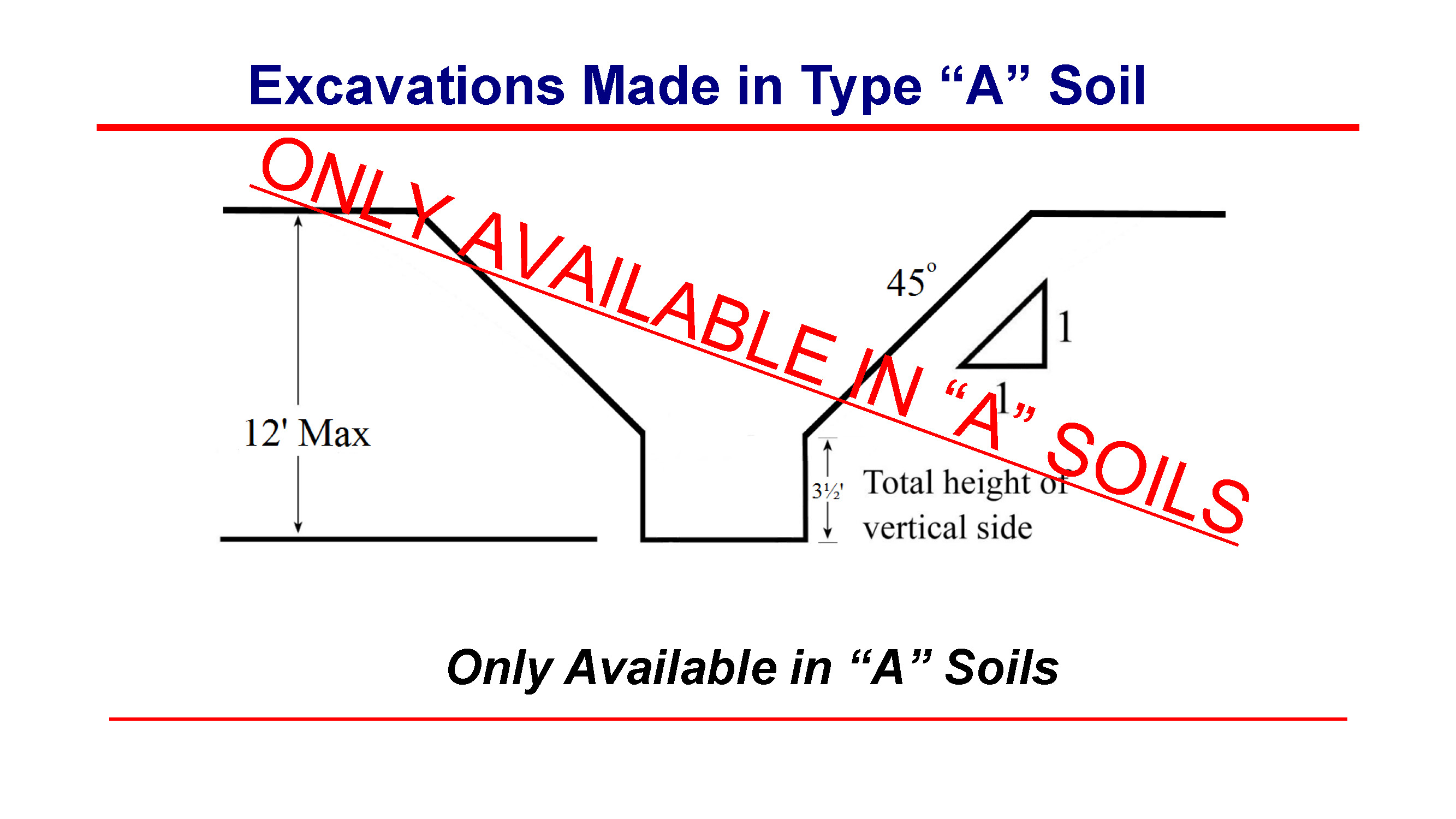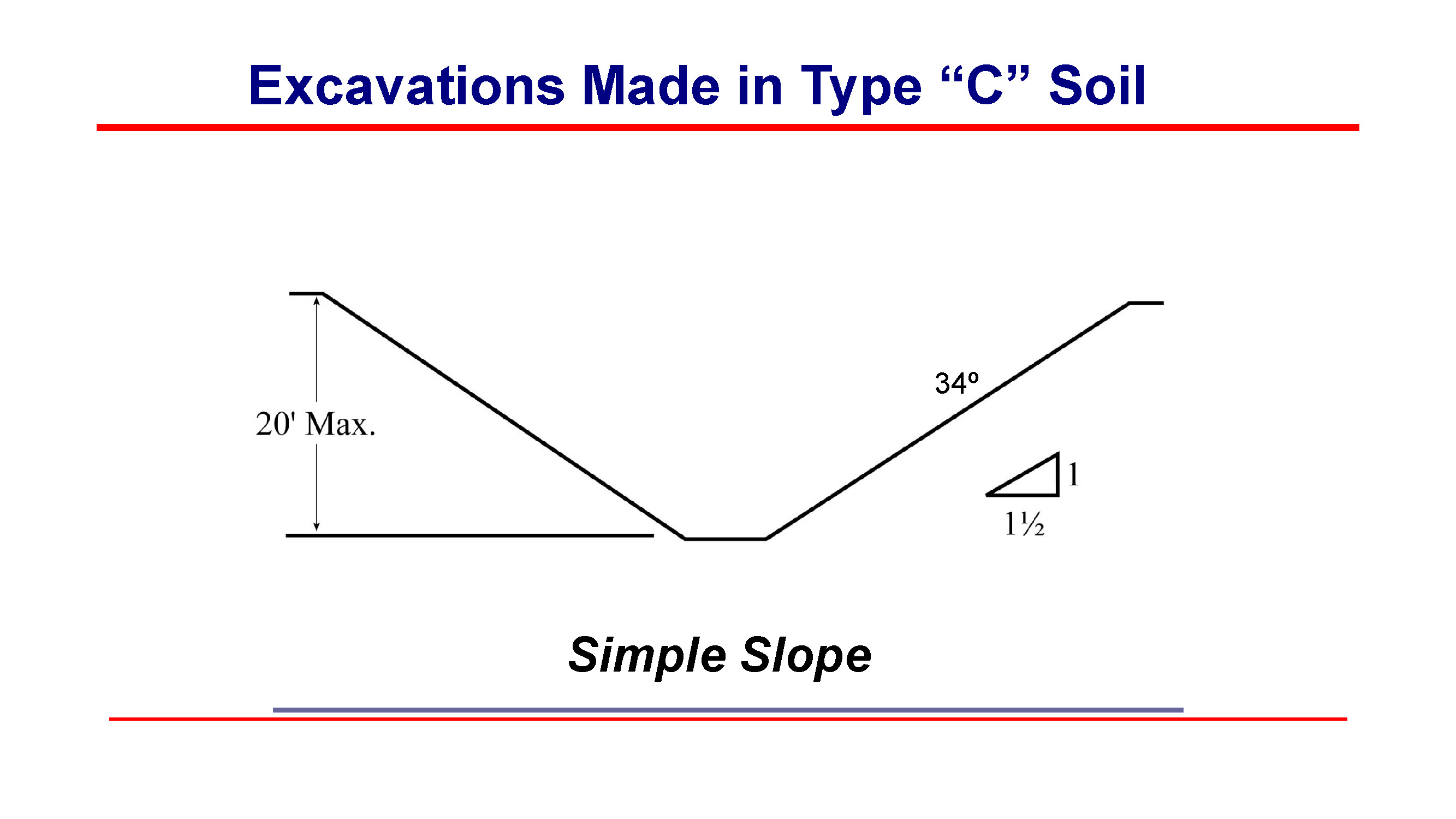Title Page
-
Date
-
Site
-
Customer
-
Project Number
-
Job Number
-
Job Location
-
Trench Location/Stationing (i.e. 0+00 - 0+50)
-
Prepared by
Initial Site Assessment
-
OSHA Technical Manual (OTM)
Appendix V:2-1. Site Assessment Questions -
During first and subsequent visits, the site's safety officer or other competent person may find the following questions useful.
-
Is the cut, cavity, or depression a trench or an excavation?
- Trench: a narrow excavation (in relation to its length) made below the surface of the ground. In general, the depth is greater than the width, but the width (measured at the bottom) is not greater than 15 feet
- Excavation: any man-made cut, cavity, trench, or depression in an earth surface, formed by earth removal
-
Is the cut, cavity, or depression more than 4 ft (1.2 m) in depth?
-
Are there adequate means of access and egress?
-
Are means of egress from the cut, cavity, or depression less than 25 ft (7.6m) from the work?
-
Is the cut, cavity or depression free from water?
-
Is it free from surface encumbrances?
-
Is it free from vehicular traffic?
-
Are adjacent structures stabilized?
-
Does mobile equipment have a warning system?
-
Is a competent person in charge of the operation?
-
What is his/her name?
-
Has the competent person determined the soil type?
-
What is the soil type?
- Type A: Unconfined compressive strength of 1.5 tons per square foot (tsf) (144 kPa) or greater. Examples of Type A cohesive soils are often: clay, silty clay, sandy clay, clay loam and, in some cases, silty clay loam and sandy clay loam.
- Type B: Unconfined compressive strength greater than 0.5 tsf (48 kPa) but less than 1.5 tsf (144 kPa). Examples of Type B soil include angular gravel, silt, silt loam, and soils that are fissured or near sources of vibration, but could otherwise be Type A.
- Type C: Unconfined compressive strength of 0.5 tsf (48 kPa) or less. Type C soils include granular soils such as gravel, sand and loamy sand, submerged soil, soil from which water is freely seeping, and submerged rock that is not stable.
-
Was a soil testing device used to determine soil type?
-
Is the immediate area free from operating equipment?
-
Are procedures required to monitor, test, and control hazardous atmospheres?
-
Is the spoil placed 2 ft (0.6 m) or more from the edge of the cut, cavity, or depression?
-
Is the depth less than 20 ft (6.1 m) or more for the cut, cavity, or depression?
-
Has a registered professional engineer approved the procedure if the depth is more than 20 ft (6.1 m)?
-
Does the procedure require benching or multiple benching? Shoring? Shielding?
-
If provided, do shields extend at least 18 in (0.5 m) above the surrounding area if it is sloped toward the excavation?
-
If shields are used, is the depth of the cut less than 2 ft (0.6 m) below the bottom of the shield?
-
Are any required surface crossings of the cut, cavity, or depression the proper width and fitted with hand rails?
-
Is emergency rescue equipment required?
-
Is there documentation of the minimum daily excavation inspection?
Daily Inspection Checklist for Trenching/Excavation Sites
Existing Utilities
-
Have underground utilities been contacted at least 2 working days prior to start of digging, and appropriately marked and identified?
-
What is the utility locate number?
-
Is the excavation close to existing utilities, buildings, footings, pilings, or sources of vibrations?
-
Have underground installations been protected, supported, or removed when the excavation is open?
-
Have all surface encumbrances such as utilities, utility poles, foundations, transformer vaults or other structures been supported or removed?
Trench / Excavation
-
Has the site been checked for previously disturbed ground?
-
Has a means of egress (e.g. ladders, steps, ramps) been provided so that no employee has to travel further than 25'?
-
If ladders are used for egress, are they secured and extended at least 3' above the top of the excavation?
-
Has the soil been classified using one (1) visual and one (1) manual method, or defaulted to classifying as Type C?
-
Are excavations with walkway or bridges equipped with guardrails (required at 6ft or deeper)?
-
Has an engineer designed the excavation or is there engineered tabulated data on site for the protective system (required if deeper than 20ft)?
-
What is the soil type as determined by the competent person?
- Type A: Unconfined compressive strength of 1.5 tons per square foot (tsf) (144 kPa) or greater. Examples of Type A cohesive soils are often: clay, silty clay, sandy clay, clay loam and, in some cases, silty clay loam and sandy clay loam.
- Type B: Unconfined compressive strength greater than 0.5 tsf (48 kPa) but less than 1.5 tsf (144 kPa). Examples of Type B soil include angular gravel, silt, silt loam, and soils that are fissured or near sources of vibration, but could otherwise be Type A.
- Type C: Unconfined compressive strength of 0.5 tsf (48 kPa) or less. Type C soils include granular soils such as gravel, sand and loamy sand, submerged soil, soil from which water is freely seeping, and submerged rock that is not stable.
-
Example Slopes for Type "A" Soils
-
-
-
-
If competent person determines the soils to be Type "A", pictures of soils and manual test results are required (i.e. penetrometer, ribbon tests, etc.)
-
Example Slopes for Type "B" Soils
-
-
-
-
-
-
If competent person determines the soils to be Type "B", pictures of soils and manual test results are required (i.e. penetrometer, ribbon tests, etc.)
-
Example Slopes for Type "C" Soils
-
-
-
Have changes in vehicular and machinery operation patterns been communicated?
-
Explain
-
Is water removal equipment (i.e. pumps) being utilized?
-
Are physical barricades around excavation planned, available, properly set up and/or in good condition?
-
Are there any overhead hazards (i.e. power lines, trees, etc.)?
-
Are all excavated materials set back at least 2 feet from the edge?
-
Is the excavation safe for employees to enter?
-
Is the excavation a confined space?
Atmospheric Testing Required
-
O2(%)
-
LEL(%)
-
Toxic(CO, H2S)
-
Other(PID)
-
Is the excavation deeper than 20 feet?
-
Is the engineered tabulated data onsite for the protective systems being used?
-
What protective system(s) have been selected for today's excavation?qdq
- Sloping
- Benching
- Shielding
- Shoring
- Engineered
- Other
-
Is the shield at least 18" above the slope?
-
Is it laterally stable?
-
Plans and all instructions must be onsite
-
No benching allowed in Type C soils
-
-
Describe
-
Adequacy and availability of all equipment, including personal protective equipment, shoring systems, signs, barricades, and machinery
-
Are trench shoring and/or shields in good shape as work progresses?
-
Are slopes and/or benches still in good shape as work progresses?
Approver
-
Competent Person OSHA 29 CFR Subpart P 1926.650(b)
-
Supervisor
-
Equipment Operator
-
Engineer
-
Other Approval







